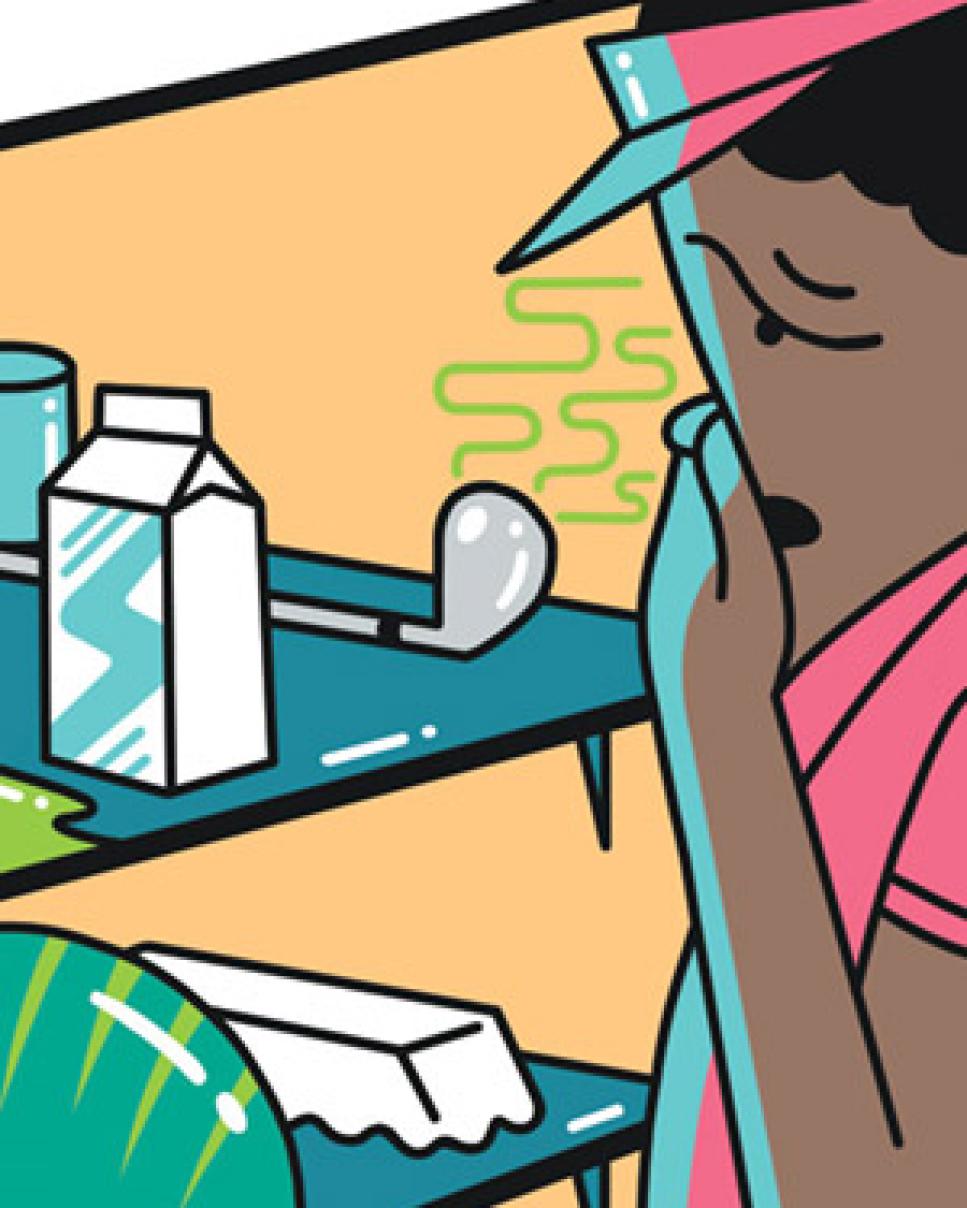Ask Golf Digest

Q: My friend says drivers, irons and even balls have a shelf life to them—that after, say, 1,000 shots they lose some of their "pop" or "bounce." Is this true?
—Bryan Heller, Corinth, N.Y.
A: Metalwood faces deform slightly within the first 500 hits, though this actually increases ball speed. Several thousand hits later, a clubface might begin to show some fatigue, but it'll crack before it loses any "pop." Iron faces aren't thin enough to deform. However, the grooves on your wedges can wear down in a couple of years if you play more than 40 rounds annually and practice regularly. With today's solid-core balls, the cover would be scraped and dinged long before a ball lost anything in terms of distance or spin because of aging or overuse.
Q: My ball is near a cartpath that will interfere with my swing. When I take free relief with the ball, can I keep my feet on the path so I can punch under some trees?
—Bob Tyler, Austin
A: No. When taking free relief from a path (immovable obstruction), you must drop within one club-length of the nearest point of relief that allows you to swing and stand without interference from the path, so long as that spot is no closer to the hole. Otherwise you have to play it as it lies. And don't blame us if you break your wrist or ruin your club.
Q: Why are there no long putters on the LPGA Tour?
—Dick Mickelsen, Fountain Valley, Calif.
A: LPGA Tour players seem to experiment with equipment less often than male tour pros do, says Golf Digest Senior Writer Ron Sirak, who has covered the LPGA Tour for 18 years. But there are women who use long putters. Sherri Steinhauer won the 2006 Women's British Open using one. Maria Hjorth lost in a playoff at the 2008 LPGA Championship using one, and Mo Martin and Jodi Ewart Shadoff use them. "Fairly representative numbers," Sirak says.
Q: I'm blind in my right eye with very poor depth perception. Can I use a level to help figure out the slope when I read a green? After all, other players can use GPS devices to help with distances.
—Ray Whitney, Plainfield, Ill.
We feel for you, Ray, but using a level is prohibited by Rule 14-3. Even placing a bottle on the green to see which way the liquid shifts is against the rules. Our suggestion: Each time you're on a green, take notes on which way the ball broke at various hole locations. You'll soon have a comprehensive guide. Another green-reading trick is to use your feet. There are 7,200 nerve endings on your soles, and they can detect even the slightest change in elevation. Give it a try.
Q: I see all these fat putter grips being used by tour players. Good for average players?
—Billy Webb, Orlando
Sure. These grips help quiet the hands, allowing the rocking of the shoulders to control the stroke and improve your consistency. Some grips have the benefit of counterbalancing the putter—that is, adding weight in the grip for extra stability. If you make the switch and don't like it, it's easy to switch back to a regular grip.
QUICK HITS
Scotland or Ireland?
Both, but start with Scotland.
Yellow balls?
Absolutely.
Water vs. Gatorade.
H2O. Not even close.
Cleatless shoes?
If they're good enough for Fred Couples...
IS THIS POSSIBLE?
My typical drive goes about 225 yards, but a launch monitor said I hit it only 205.
If you miss the center of the clubface by less than half a ball—which average golfers do a lot—you're losing at least 4 miles per hour of ball speed and likely adding spin. Both can cost you 15 yards or more. So your best drives might be 225 yards, but we'll venture a lot of them are in that 205-yard range. No offense.
*Submit your burning questions here: ask@golfdigest.com or on Twitter @golfdigestmag
.*

